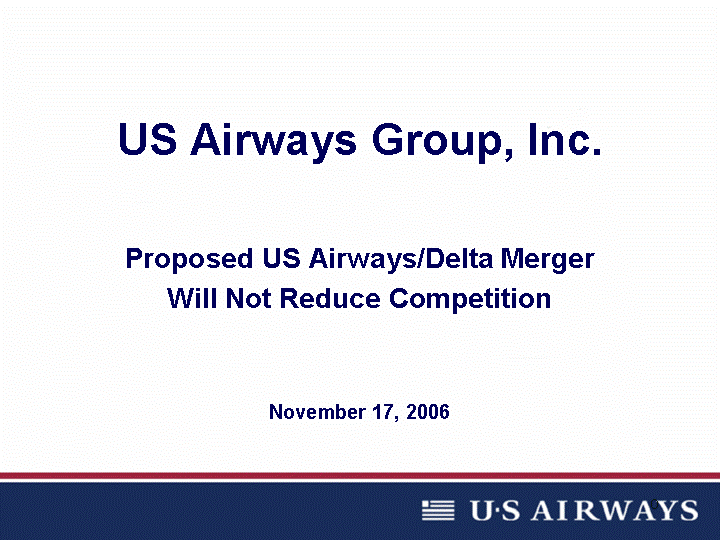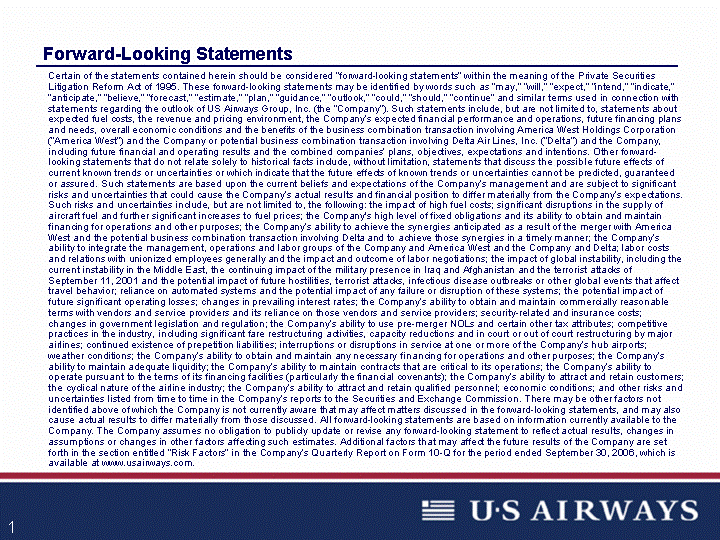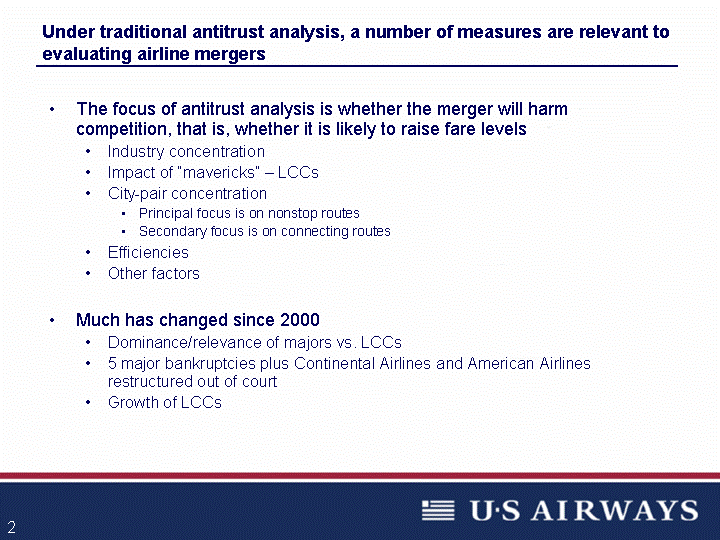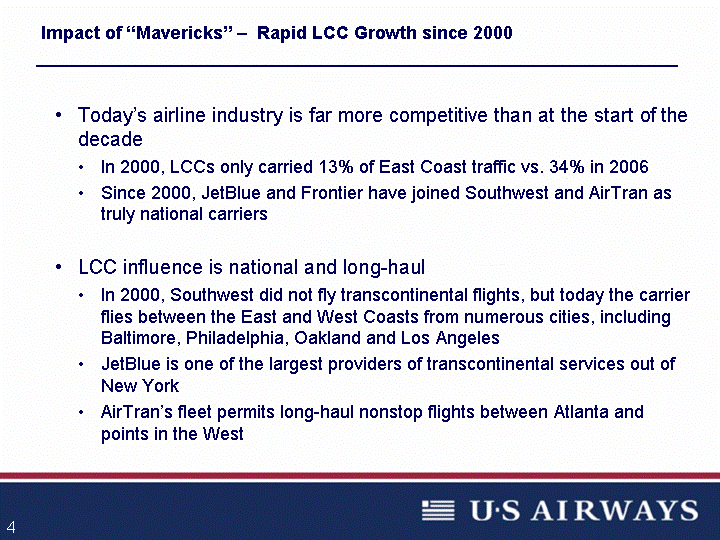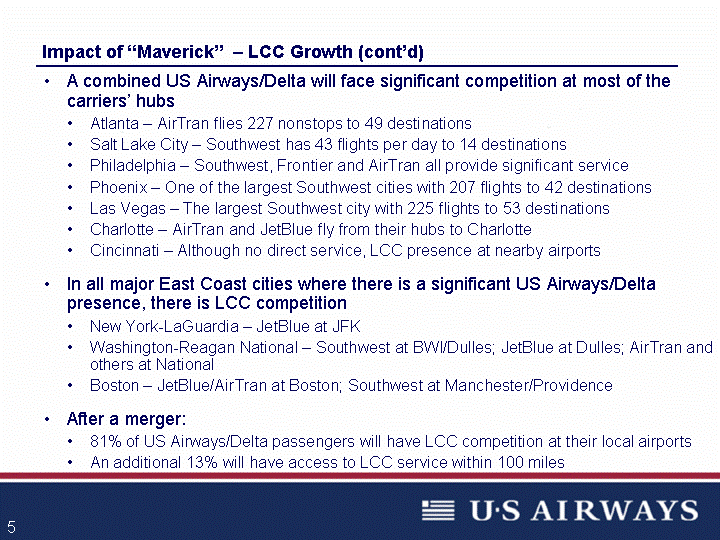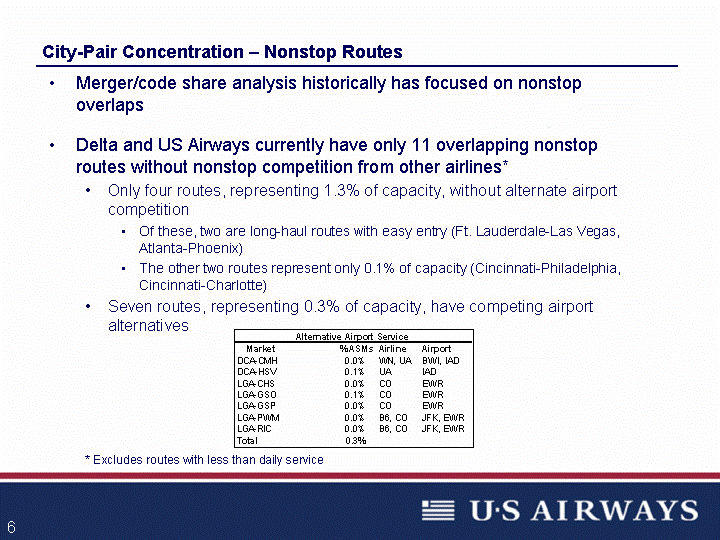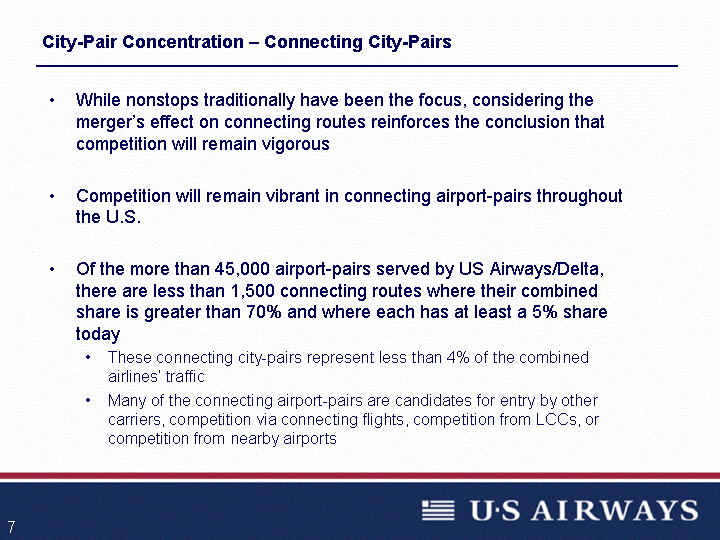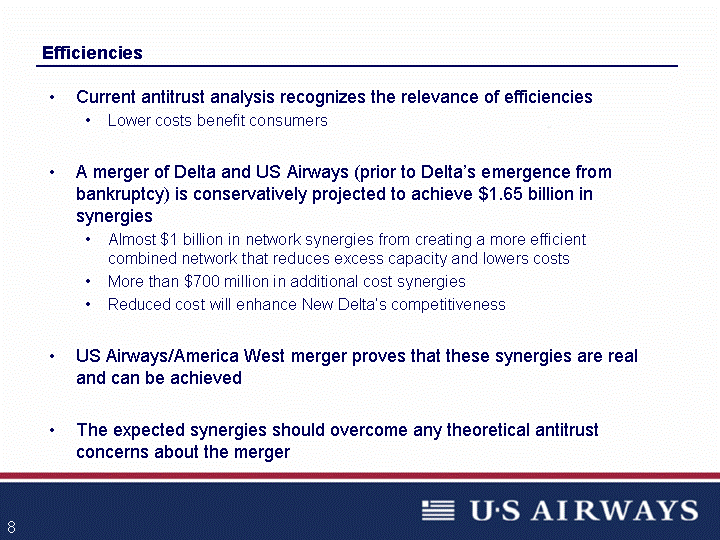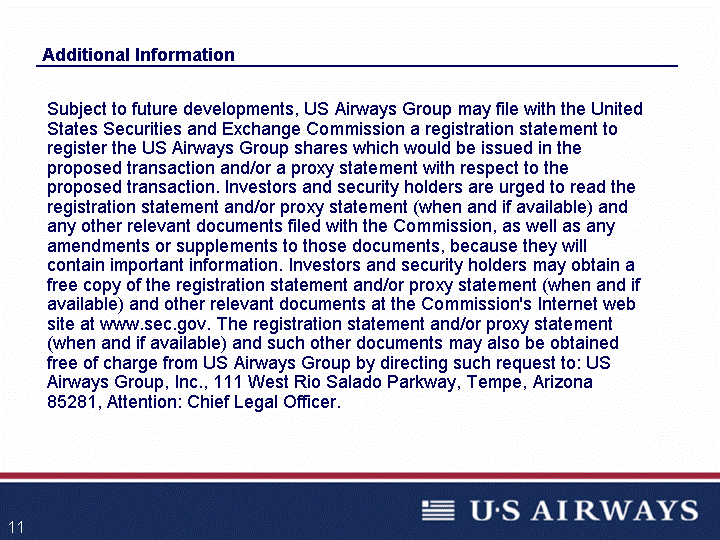| Forward-Looking Statements Certain of the statements contained herein should be considered "forward-looking statements" within the meaning of the Private Securities Litigation Reform Act of 1995. These forward-looking statements may be identified by words such as "may," "will," "expect," "intend," "indicate," "anticipate," "believe," "forecast," "estimate," "plan," "guidance," "outlook," "could," "should," "continue" and similar terms used in connection with statements regarding the outlook of US Airways Group, Inc. (the "Company"). Such statements include, but are not limited to, statements about expected fuel costs, the revenue and pricing environment, the Company's expected financial performance and operations, future financing plans and needs, overall economic conditions and the benefits of the business combination transaction involving America West Holdings Corporation ("America West") and the Company or potential business combination transaction involving Delta Air Lines, Inc. ("Delta") and the Company, including future financial and operating results and the combined companies' plans, objectives, expectations and intentions. Other forward- looking statements that do not relate solely to historical facts include, without limitation, statements that discuss the possible future effects of current known trends or uncertainties or which indicate that the future effects of known trends or uncertainties cannot be predicted, guaranteed or assured. Such statements are based upon the current beliefs and expectations of the Company's management and are subject to significant risks and uncertainties that could cause the Company's actual results and financial position to differ materially from the Company's expectations. Such risks and uncertainties include, but are not limited to, the following: the impact of high fuel costs; significant disruptions in the supply of aircraft fuel and further significant increases to fuel prices; the Company's high level of fixed obligations and its ability to obtain and maintain financing for operations and other purposes; the Company's ability to achieve the synergies anticipated as a result of the merger with America West and the potential business combination transaction involving Delta and to achieve those synergies in a timely manner; the Company's ability to integrate the management, operations and labor groups of the Company and America West and the Company and Delta; labor costs and relations with unionized employees generally and the impact and outcome of labor negotiations; the impact of global instability, including the current instability in the Middle East, the continuing impact of the military presence in Iraq and Afghanistan and the terrorist attacks of September 11, 2001 and the potential impact of future hostilities, terrorist attacks, infectious disease outbreaks or other global events that affect travel behavior; reliance on automated systems and the potential impact of any failure or disruption of these systems; the potential impact of future significant operating losses; changes in prevailing interest rates; the Company's ability to obtain and maintain commercially reasonable terms with vendors and service providers and its reliance on those vendors and service providers; security-related and insurance costs; changes in government legislation and regulation; the Company's ability to use pre-merger NOLs and certain other tax attributes; competitive practices in the industry, including significant fare restructuring activities, capacity reductions and in court or out of court restructuring by major airlines; continued existence of prepetition liabilities; interruptions or disruptions in service at one or more of the Company's hub airports; weather conditions; the Company's ability to obtain and maintain any necessary financing for operations and other purposes; the Company's ability to maintain adequate liquidity; the Company's ability to maintain contracts that are critical to its operations; the Company's ability to operate pursuant to the terms of its financing facilities (particularly the financial covenants); the Company's ability to attract and retain customers; the cyclical nature of the airline industry; the Company's ability to attract and retain qualified personnel; economic conditions; and other risks and uncertainties listed from time to time in the Company's reports to the Securities and Exchange Commission. There may be other factors not identified above of which the Company is not currently aware that may affect matters discussed in the forward-looking statements, and may also cause actual results to differ materially from those discussed. All forward-looking statements are based on information currently available to the Company. The Company assumes no obligation to publicly update or revise any forward-looking statement to reflect actual results, changes in assumptions or changes in other factors affecting such estimates. Additional factors that may affect the future results of the Company are set forth in the section entitled "Risk Factors" in the Company's Quarterly Report on Form 10-Q for the period ended September 30, 2006, which is available at www.usairways.com. 1 |
